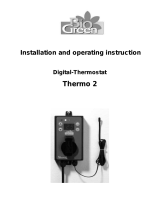
installing your air conditioner _19
ENGLISH
1.
Install horizontal drainpipe with a slope of 1/100 or more and
fix it by hanger space of 1.0~1.5m.
2.
Install U-trap at the end of the drainpipe to prevent a nasty
smell to reach the indoor unit.
3.
Do not install the drainpipe to upward position.
It may cause water flow back to the unit.
Drainpipe Connection
Wiring Work
Silver solder
1.
Before wiring work, you must turn off all power source.
2.
Indoor unit power should be supplied through the
breaker(ELCB or MCCB+ELB) separated by the outdoor
power.
ELCB: Earth Leakage Circuit Breaker
MCCB:Molded Case Circuit Breaker
ELB:Earth Leakage Breaker
3.
The power cable should be used only copper wires.
4.
Connect the power cable{1(L), 2(N)} among the units within
maximum length and communication cable(F1, F2) each.
5.
Connect F3, F4(for communication) when installing the
wired remote Control.
Power and communication cable connection
Selecting compressed ring terminal
Norminal
dimensions
for cable
(mm
2
)
Norminal
dimensions
for screw
(mm)
B D d1 E F L d2 t
Standard
dimension
(mm)
Allowance
(mm)
Standard
dimension
(mm)
Allowance
(mm)
Standard
dimension
(mm)
Allowance
(mm)
Min. Min. Max.
Standard
dimension
(mm)
Allowance
(mm)
Min.
1.5
4 6.6
±0.2 3.4
+0.3
-0.2
1.7 ±0.2 4.1 6 16 4.3
+0.2
0
0.7
4 8
2.5
4 6.6
±0.2 4.2
+0.3
-0.2
2.3 ±0.2 6 6 17.5 4.3
+0.2
0
0.8
4 8.5
4 4 9.5 ±0.2 5.6
+0.3
-0.2
3.4 ±0.2 6 5 20 4.3
+0.2
0
0.9
Specification of electronic wire
Power supply MCCB ELB or ELCB
Power
cable
Earth
cable
Communication
cable
Max : 242V
Min : 198V
X A
X A, 30mmA
0.1 s
2.5mm
2
2.5mm
2
0.75~1.5mm
2
Decide the capacity of ELCB(or MCCB+ELB) by below formula.
Power supply cords of parts of appliances for outdoor use shall not
be lighter than polychloroprene sheathed flexible cord.
(Code designation IEC:60245 IEC 57 / CENELEC: H05RN-F or
IEC:60245 IEC 66 / CENELEC: H07RN-F
)
The capacity of ELCB(or MCCB+ELB) X [A] = 1.25 X 1.1 X ∑Ai
X
: The capacity of ELCB(or MCCB+ELB).
∑
Ai : Sum of Rating currents of each indoor unit.
Refer to each installation manual about the rating current of indoor unit.
Decide the power cable specification and maximum length
within 10% power drop among indoor units.
Coef: 1.55
Lk: Distance among each indoor unit[m],
Ak: Power cable specification[mm
2
], ik: Running current of each unit[A]
∑ (
Coef×35.6×Lk×ik
) <
10% of input
voltage[V]
1000×Ak
n
k=1
Without the drain pump
1~1.5m
Horizontal drainpipe
more than 1/100 slope
Ceiling
Hanger
Flexible hose
With the drain pump
1.
The drain pipe should be installed within 300mm to 550mm
from the flexible hose and then lift down 20mm or more.
2.
Install horizontal drainpipe with a slope of 1/100 or more
and fix it by hanger space of 1.0~1.5m.
3
Install the air vent in the horizontal drainpipe to prevent
water flow back to the indoor unit.
You may not need to install it if there were proper
slope in the horizontal drainpipe.
Note
4
The flexible hose should not be installed upward position,
it may cause water flow back to the indoor unit.
1~1.5m
20mm
or more
200mm
or more
Hanger
Within
300~550mm
Air vent
300mm or less
Flexible hose
Horizontal drainpipe
more than 1/100 slope
Ceiling
1.
Install horizontal drainpipe with a slope of 1/100 or more and
fix it by hanger space of 1.0~1.5m.
2.
Install U-trap at the end of the drainpipe to prevent a nasty
smell to reach the indoor unit.
Centralized Drainage
Without the drain pump
100mm or more
Ceiling
Horizontal drainpipe
more than 1/100 slope
1.
Install main air vent at the front of the farthest indoor unit from
the main drain when installed indoor units are more than 3.
2.
You may need to install individual air vent to prevent water
flow back at the top of each indoor unit drainpipe.
With the drain pump
Hanger
Main drainpipe
Individual
air vent
Main air vent
Centralized horizontal drainpipe
(more than 1/100 slope)
550mm
or less
1~1.5m
N L
N L N L N L
ELCB
MCCB+
ELB
V1 V2
Indoor Unit 1
Outdoor
Unit
Wired Remote
Control
220-240V~
h
ELCB : Essential Installation
h
Ceiling, wall-mounted indoor unit.
Indoor Unit 2 Indoor Unit 3
Indoor Unit 4 Indoor Unit 5 Indoor Unit 6
EEV kit
WARNING
Power off before connecting any wires;
Indoor PBA will be damaged while V1,V2,F3,F4
short each other.
or





















